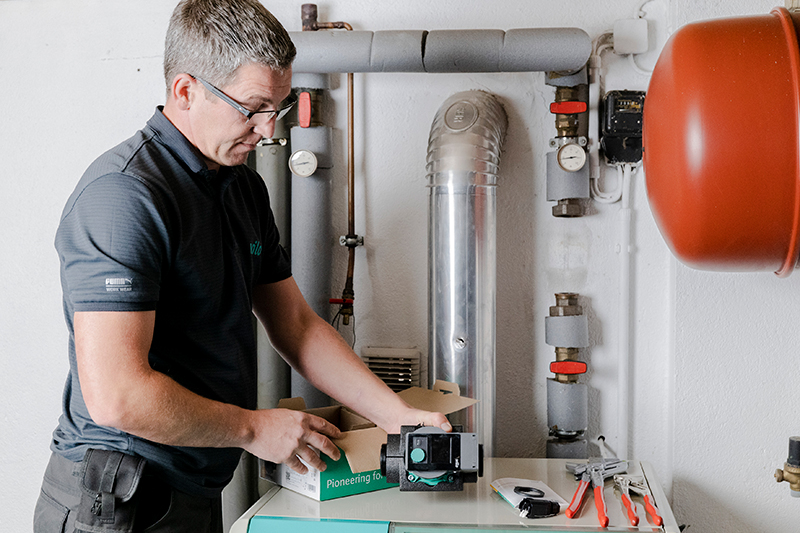
With a wide variety of heating circulation pumps on the market all promising energy saving benefits with new and improved technology, understanding how these critical plumbing and heating products work can be complicated. Here, Andy Thompson, National Sales Manager at Wilo UK, provides answers to the six most frequently asked questions when it comes to heating circulation pumps.
- How should central heating circulator pumps be sized?
Installers will understandably have many questions when it comes to choosing the right central heating circulation pump, including how to correctly size the pump. Dependent on the performance data of the existing pump, any new pump should first be checked for compatibility with the existing heating system to ensure the right delivery head and volume flow. To ensure maximum energy efficiency, installers should calculate the heating system’s requirements based off of how many radiators there are in the property, or the area of underfloor heating that the circulation pump is serving water to.
Ultimately, sizing a circulator pump has been made much easier by software and apps like the Wilo-Assistant app. Installers can use the app which asks various questions about the heating system before suggesting the right model for the job. Also, the Wilo PICO range, which incorporates the Wilo Yonos-PICO and Wilo-Stratos PICO, has clear guidance printed on the inside of the packaging box.
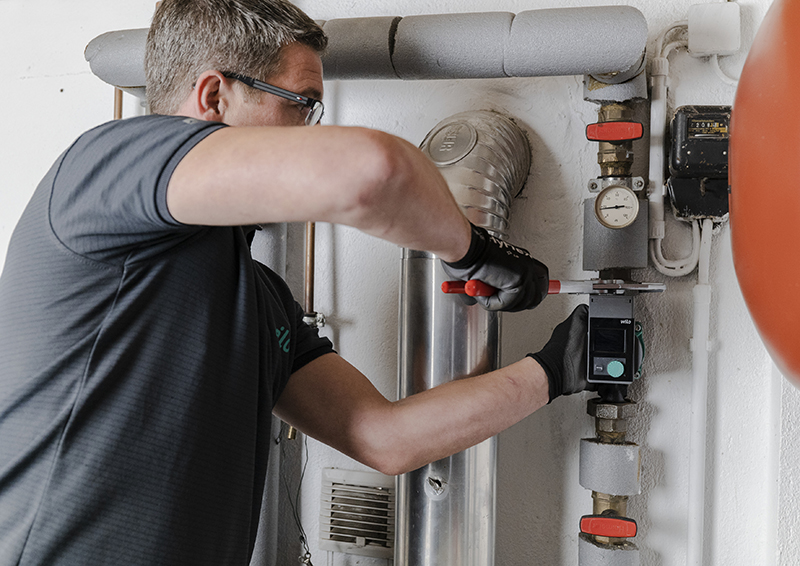
- How to change a circulator pump?
To change an existing circulator pump, installers should always start by performing mechanical and electrical isolation of the existing pump, before demounting it.
Firstly, check that the replacement pump has the same port to port dimensions as the old pump, if not then pipework reworking will be required to match the pipework to the new pump measurements. The pump and new gaskets should be then fitted into position. It’s recommended that installers review the manufacturer’s manual for correct pump orientations. The union nuts should then be tightened and then, if supplied with the pump, an insulation jacket should be fitted around the pump housing.
Pumps will then need to be wired and connected electrically, and in terms of the Stratos PICO pump, this is simple and easy through the Wilo-Connector. Once installed, pumps need to be commissioned.
Pre-set applications make choosing the right setting easy. In the Stratos PICO’s case, it comes with the unique option of utilising Wilo’s Dynamic Adapt Plus smart feature, which automatically adjusts the pump to meet the requirements of the heating system, drastically reducing the set-up time.
Alternatively, installers can use assisting software applications and the pump’s simple to navigate LCD screen to make hydronic balancing more straightforward for themselves, with applications only needing minor data entry to correctly balance a heating system.
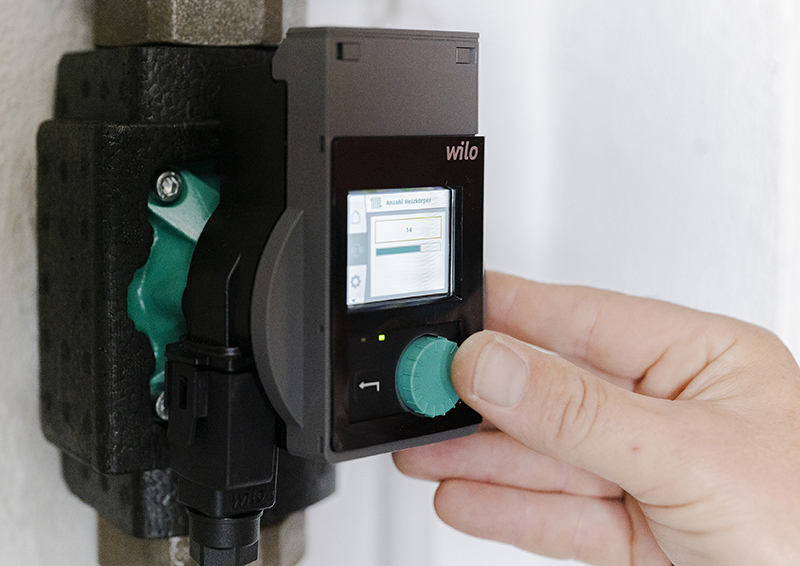
- Do circulating pumps run continuously?
The answer is both yes and no. If the heating system uses an older heating circulation pump model, then an alternating current (AC) motor will be working at a fixed speed, with usually one to three speed options. These older motors have no configuration options and consume significantly more electricity than newer, smarter models.
Alternatively, newer heating circulation pumps use electronically commutated (EC) motor technology. These highly efficient modern motors operate at a variable speed to meet required demand and allow for pump configurations, in turn modulating up or down to suit the system requirements ensuring that the pump runs only when there is demand and on average at a much lower speed than AC motor equivalents.
Due to advances in technology and user controls, the new generation of pumps can pay for themselves over two or three years thanks to the electricity savings.
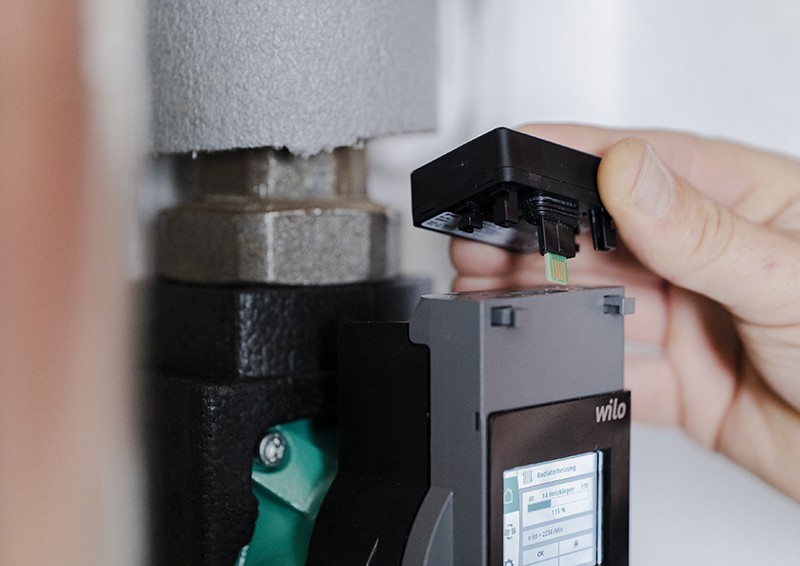
- How do you check if a circulator pump is working?
Thankfully, many heating circulation pump manufacturers have helpful how-to-guides for each of their products which installers can follow when on a callout. Additionally, some of the latest models like the Stratos PICO can be equipped with optional Bluetooth modules. This, along with using smart assisting technology such as the Wilo-Assistant app, allows installers to access technical information in real time on their mobile devices, enabling them to download reports and monitor how the pump is performing.
This new technology also allows for early system issue detection using Wilo’s ‘fault signal assistant’ tool. The tool holds fundamental information on potential error signals and can specify the cause of the problem, describe the issue, and offer solutions, both on the app and on the LCD screen of the pump itself.
Wilo Yonos and Stratos PICO pumps also conveniently display live information regarding flow, head, and importantly energy usage, plus display simple LED colours to indicate that they are running.
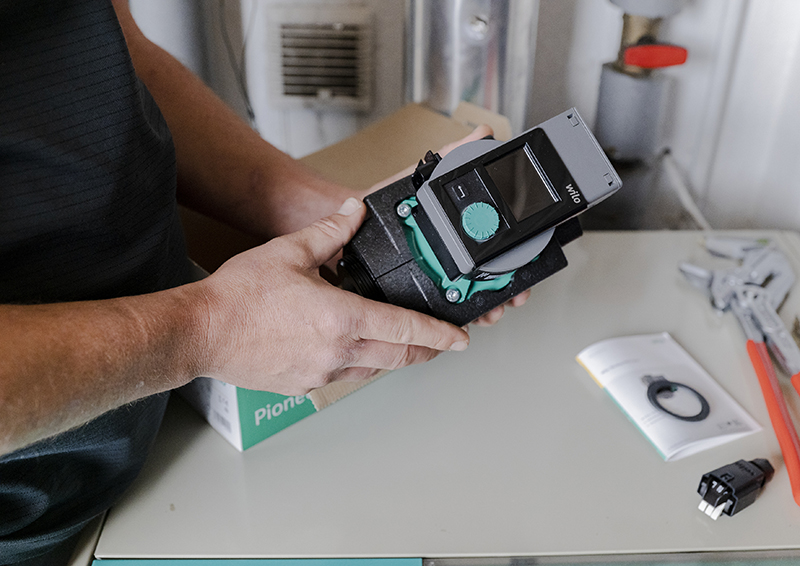
- How many watts does a circulator pump use?
An inefficient circulator pump, especially fixed speed models, can consume more than 80 watts whereas Wilo domestic heating circulator pumps, even at their highest setting, will only consume around 40 watts. Working at their lowest setting, Wilo pumps can consume as little as four watts of energy, reinforcing the need for newer technology to be adopted by industry professionals.
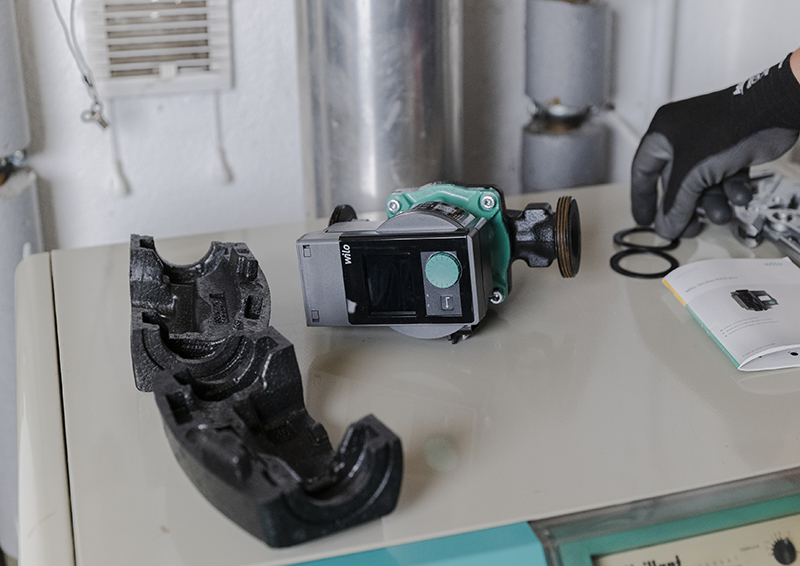
- What else should be considered when choosing a circulating pump?
There are a variety of factors to weigh up when selecting a circulator pump. Firstly, opting for an EC motor over an AC motor should be a key priority, and we encourage domestic installers to discuss this with homeowners that are yet to switch to modern circulation pumps. Following the steps on how to correctly size a circulator pump should then be followed to ensure maximum compatibility with a new system.
Physical features and add-ons on a pump should also be considered. New models, such as the Stratos PICO, come with an easy-to-use LCD screen and user interface plus a thermal insulation shell as standard which reduces lagging time for installers and contributes to energy savings by reducing heat-loss within the system.
Another key consideration for professionals should be ease of electrical connectivity. To avoid tricky electrical terminal connections in cramped spaces, installers should make use of the latest features available on the Stratos PICO. The Wilo-Connector is a mains connection cable which simply requires the strip down of three wires, before putting them into the correct terminal and snapping the terminal shut to hold the wire in place when the cover is sealed.
Finally, bear in mind the sustainability credentials of products and the manufacturers behind them. Some pumps on the market have travelled thousands of miles and are not manufactured within modern factories, and this in itself contributes to global warming. The Wilo-Stratos PICO circulating pump range is manufactured in a Climate Neutral modern factory from a company that has achieved an EcoVadis Platinum level – which is only awarded to the top 1% of companies in the world for sustainability credentials.
Taking this holistic approach to choosing a new circulating pump ensures both installers and customers reap the rewards of market leading models.
For more information about heating circulators and the Stratos PICO, visit www.wilo.co.uk/stratospico.













